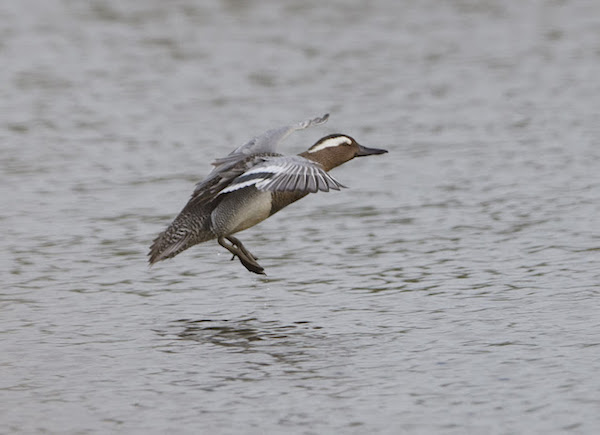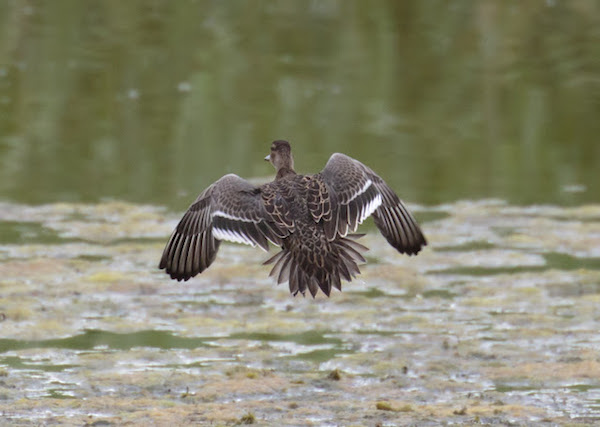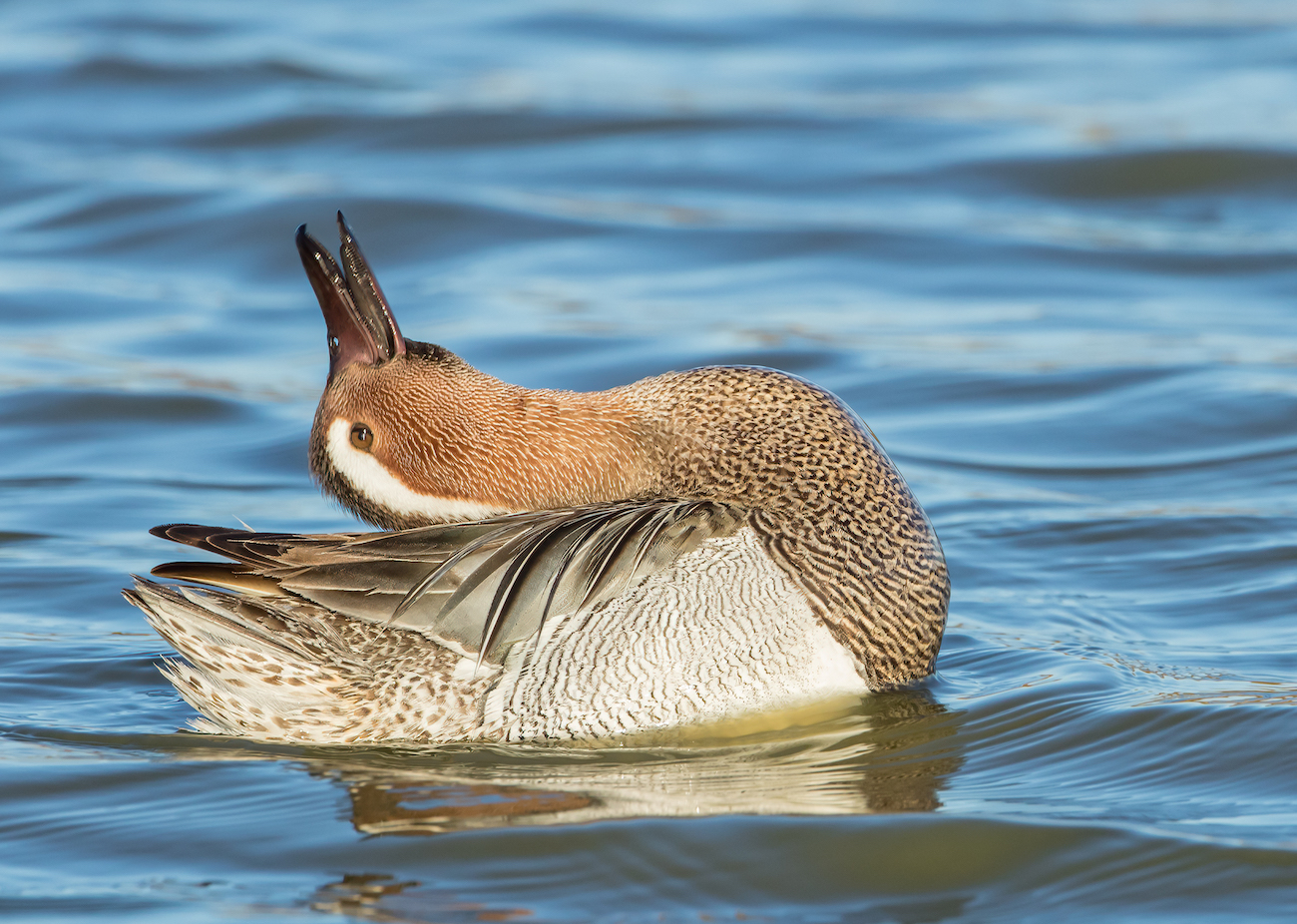Garganey Spatula querquedula
Scarce passage migrant, rare summer visitor, breeding occasionally. Exceptional in winter.



Garganey: left and centre, male and female Barton Pits May 10th 2011 (Graham Catley); right, Grainthorpe April 17th 2016 (Mark Johnson).
Ealy records showed that several pairs occurred most springs at Ashby Decoy, where 29 were trapped 1834-1868. A few pairs nested in the NW of the county, particularly at Scotton Common, at least until 1914, probably to 1918, but breeding was not recorded again until a pair nested at Goxhill in 1948, and another pair probably bred in the Welland Washes. Between 1951-62 up to five pairs bred at the latter site until drainage of the area destroyed the nesting habitat. Definite breeding occurred at Skellingthorpe in 1958; Lincoln STW 1960; Baston Fen in 1867 and 1980; and at Killingholme in 1981 and 1987 (Lorand and Atkin, 1989).
The Atlas suggested 10 pairs per annum occurred in the late 1980s, but apart from the two sites mentioned above, most were never confirmed as having bred. Using perhaps a slightly tougher standard, RBBP records show an average of 5 pairs per year bred during the period 2013-2017. An early migrant, pairs often turn up from late March and through into May, but usually only stick around for a few days. They are generally reported from around 25 sites a year. The most consistent sites where breeding has been confirmed in recent years have been Frampton Marsh and Middlemarsh Farm, near Skegness. Records after the end of October are exceptional. In the 10 years to 2018 the only winter record was one seen at Alkborough Flats on Jan 14th and 27th, 2018.
(Account as per new Birds of Lincolnshire (2021), included September 2022)
